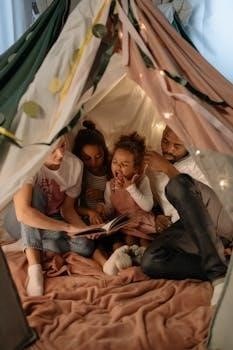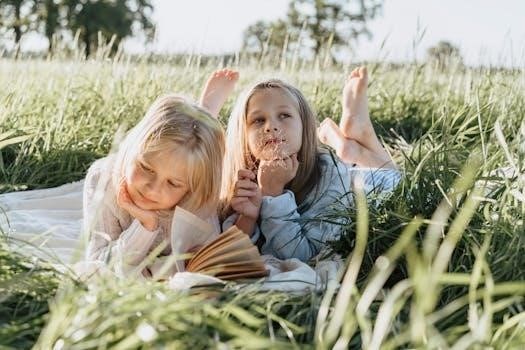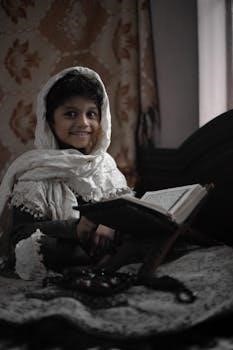The Origins of The Three Little Pigs
The tale’s roots are believed to predate the 19th century‚ with an early published version appearing in Dartmoor‚ England‚ in 1853. This version featured three little pixies and a fox‚ instead of pigs and a wolf. This predates the commonly known version.
Early Published Versions
The earliest known published iteration of the narrative comes from Dartmoor‚ Devon‚ England‚ dating back to 1853. This rendition‚ however‚ deviates from the familiar pig-and-wolf dynamic. Instead‚ it introduces three diminutive pixies‚ each constructing a different dwelling‚ and a cunning fox as the antagonist. The first pixie built a wooden house. This early form provides a fascinating glimpse into the story’s evolution. It showcases how traditional narratives often morph over time‚ adapting to new audiences and cultural contexts. The presence of pixies rather than pigs indicates an oral tradition that has undergone modifications before it was documented in print. The fox’s role remains similar to that of the wolf‚ attempting to enter the dwellings of the pixies. This early version highlights the foundational elements of the story. It is still present in the more widely known version‚ which features the pigs and wolf.

Character Analysis in the Story
The story features three pigs‚ each with distinct traits. The first two embody laziness‚ while the third demonstrates hard work and planning. The wolf acts as an antagonist‚ symbolizing life’s challenges and hardships.
Symbolism of the Wolf
In the narrative‚ the wolf is not merely a villainous character‚ but a potent symbol representing a range of negative forces. He embodies the challenges‚ hardships‚ and negativity that individuals often encounter throughout life. The wolf’s persistent attempts to infiltrate the pigs’ homes showcase the relentless nature of adversity. His actions‚ from huffing and puffing to plotting to enter via the chimney‚ highlight the various forms that these challenges can take. The wolf’s cunning and predatory behavior serves as a reminder of the constant need to be vigilant and prepared against the potential threats that might be encountered. He also represents the consequences of poor planning‚ by constantly failing in the face of the diligent pig’s planning. Ultimately‚ the wolf embodies the obstacles that must be overcome to achieve success and security‚ making him a central part of the story’s deeper meaning.
Pigs’ Varying Traits
The three little pigs in the story each represent different approaches to life and work. The first two pigs are depicted as lazy and careless‚ opting for the easiest and quickest solutions when building their homes. The first pig chooses straw‚ a flimsy material‚ while the second uses sticks‚ only slightly more substantial. Their choices highlight their lack of foresight and their desire for immediate gratification‚ rather than long-term security. These pigs symbolize the pitfalls of procrastination and a lack of effort‚ demonstrating how such traits can lead to vulnerability and failure. In stark contrast‚ the third pig embodies hard work‚ planning‚ and diligence‚ investing time and effort into constructing a sturdy brick house. This pig’s trait demonstrates the importance of perseverance and preparation‚ showcasing the rewards of dedication and responsible decision-making‚ ultimately securing safety from the wolf.

The Plot of The Three Little Pigs
The story follows three pigs who leave home to build their own houses. They each choose different materials‚ straw‚ sticks‚ and bricks‚ which leads to very different outcomes when the wolf arrives.
Building of the Houses
The first little pig‚ choosing the path of least resistance‚ quickly constructs a house of straw. This decision reflects a desire for immediate gratification and a lack of foresight. The second pig‚ also prioritizing speed over sturdiness‚ builds his abode from sticks. While slightly more robust than straw‚ it still lacks the strength needed to withstand external forces. In contrast‚ the third little pig demonstrates diligence and planning‚ opting for the laborious task of building a house with bricks. This decision requires more time and effort‚ showcasing the value of hard work and preparation. He carefully lays each brick‚ creating a solid and secure structure. This variance in construction highlights the different approaches each pig takes to life and challenges. The houses symbolize each pig’s character and their chosen path.
The Wolf’s Attempts

The wolf‚ a symbol of life’s challenges‚ begins his assault on the pigs’ homes. He first approaches the straw house‚ demanding entry with menacing words. When refused‚ he employs his signature tactic – a powerful huff and puff – easily demolishing the flimsy structure. He then moves to the stick house‚ repeating his threats and actions. This house also succumbs to his forceful breath‚ leaving the second pig vulnerable. However‚ upon reaching the brick house‚ the wolf’s usual strategy fails. He huffs and puffs with all his might‚ yet the brick walls stand firm‚ showcasing the strength of careful planning and hard work. Frustrated‚ he attempts to enter through the chimney‚ but the third pig has prepared a trap‚ leading to the wolf’s demise. The wolf’s repeated failures highlight the importance of preparation.

Variations and Interpretations
The classic tale has seen many retellings and reinterpretations‚ including parodies and modern adaptations. These variations often explore different perspectives or offer twists on the original narrative‚ providing fresh takes.
“The True Story of the Three Little Pigs”
Jon Scieszka’s “The True Story of the 3 Little Pigs!” offers a unique twist by presenting the narrative from the Big Bad Wolf’s perspective‚ named A. Wolf. This book challenges the traditional portrayal of the wolf‚ suggesting he was framed. The book provides a humorous and alternative explanation for the events‚ claiming the wolf only wanted a cup of sugar and had a cold‚ causing him to sneeze and blow down the houses. This version of the story was released in 1989. This allows readers to question the original tale and consider different points of view. It is a clever take on the classic‚ inviting critical thinking and showing that there are always multiple sides to a story. The book is often used in educational settings to explore the concept of perspective.
Parodies and Modern Adaptations
The enduring popularity of “The Three Little Pigs” has led to numerous parodies and modern adaptations. These variations often reimagine the characters and plot‚ sometimes from unexpected perspectives. Some versions present the wolf as a misunderstood character or focus on the pigs learning different lessons. These adaptations can be found in books‚ animated films‚ and theatrical performances. There are even interactive versions where the reader or viewer can influence the story. These parodies and modern takes on the tale often incorporate humor‚ which adds a new layer to the classic narrative. They illustrate how stories can be reinterpreted for new audiences while still maintaining the core themes. Such adaptations engage with contemporary social issues too‚ and are used to teach children about different perspectives.
